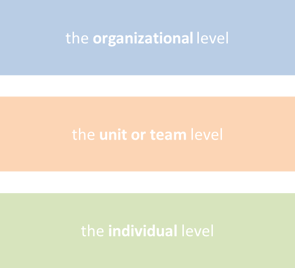Downsizing is one of the hardest change management challenges a leader has to face. And one that many organizations are having to consider right now due to the unprecedented levels of uncertainty and disruption.

While, in practice, and depending on specific circumstances the underlying reason can be either positive or negative, generally employees are likely to perceive downsizing as negative organizational change. For very valid reasons. It has a significant impact on people’s lives and needs be managed carefully, taking into consideration this personal, individual impact.
So, it is important to go beyond the numbers, beyond the facts, and look at the change in terms of people. Human emotions, the collective individuals’ willingness to accept the change, the need to downsize, and move to embrace the future organizational vision all play a significant role in successfully managing this type of organizational change.
A downsize is a strategic business transformation that impacts the entire organization
During a downsize the planning process predominantly focuses on those employees who will face redundancy, or job role changes, and ensuring fair and equitable management of the situation. We often forget the impact on those employees “left behind”, who have just experienced their colleagues facing a significant life event. We also often forget the impact on the leaders and supervisors who have the difficult task of delivering bad news to their teams.
We expect these employees, and their leaders, to keep the ‘ship on course’ without a bump in motivation or performance. Managing a downsize as an organizational transformation initiative provides the Change Management approach needed to redirect energy and re-focus on the future
Leaders’ words and actions during a downsize significantly impact on the collective resistance or acceptance
Our white paper on The Psychology of Change discusses the underlying psychological factors of Change Management.
People’s reaction to change is individual, and their emotional reaction to the change and the perceived need for downsizing impacts their willingness to accept or resist the change, and, in turn, their motivation and energy towards their work.
The Psychology of Change suggests you consider organizational change at three levels.
At the organizational level employees want a two-way dialogue with leaders who are credible, transparent and trustworthy
Providing clarity in a time of ambiguity. Linking today’s actions, however bad they seem, to a future vision that your employees can embrace and get emotionally involved with is essential.
You also need to be transparent and trustworthy, as your employees will see right through an attempt at smoke and mirrors. To be effective communication needs to be straight forward or you risk losing the trust of your workforce, now and during future transformations.

At the work unit level employees are looking for Change Leadership to continue
There are a number of imperatives here for Change Leaders, particularly in disruptive times. Providing a safety net, giving the space for concerns to be heard, and cascading key change messages. Trust and transparency continue to be important. If employees feel that they cannot trust their immediate manager they will find it difficult to cope with the changes.
Participation in decisions surrounding a change is known to increase willingness and build personal commitment to the change. In a time of downsizing, providing employees the ability, as much as possible, to help shape how their team will work in the new organization allows active participation at a difficult time. Creating new team structures, process changes, or even the office layout are examples where participation can be actively encouraged.
At the individual level, employees need to know they will have room to process the events
The loss of colleagues, or a change in job role, will impact each individual differently. While the business cannot stand still, providing some measure of space for people to go through what is essentially a grieving period, while continuing to manage their daily workload, provides the support needed to move forward.
You can support your employees even more at the individual level by providing tools with which they can clearly link how their behavior and actions will link to the success of the transformation. This allows each individual the ability to choose to be actively involved in the change, and the future success of the company.
Manage a downsize by addressing three levels of change and supporting the people within your organization
Downsizing can be a very hard change to manage without experiencing loss of motivation, productivity and unwanted turnover. Using a change management approach during a downsize, and considering specific factors that influence an individual’s attitude towards the organizational transformation, will help your workforce move through the change, and refocus on the future vision of the organization.
 |
OUR CHANGE MANAGEMENT METHODOLOGY CAN HELP Find out more about our methodology by downloading our highly informative white paper, Our Change Management methodology - How PCI® helps you implement change. |




Leave a comment